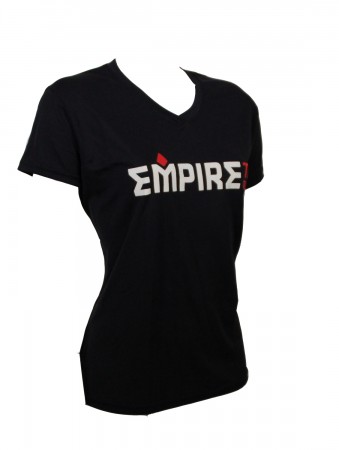
TRANSITIONING AND BRICK WORKOUTS
INTRODUCTION:
Triathlon is a unique sport because it’s comprised of 3 different disciplines. Not only do triathletes have to practice swimming, biking and running – they have to learn how to put all three together in a race. The most successful triathletes are not necessarily the best swimmers, best bikers, or best runners. They are the people who can put all three sports together the most efficiently.
BRICK WORKOUTS:
What is a brick?
A brick workout is any combination of 2 or more disciplines practiced immediately after one another with very little rest time in between.
What is the purpose for doing a brick workout?
The purpose of a brick is to get you used to transitioning between different muscle groups, which are used in each of the three sports. In a race, you will be swimming, biking and running right after one another without resting in between, so it’s a good idea to simulate these types of workouts in practice. The first time you do this you may feel sluggish, experience cramps, a tingling in your feet or “jello legs.’ By doing frequent brick workouts, these symptoms will subside, and the more quickly you will be able to get up to a comfortable ‘race pace’.
How to implement brick workouts for beginners / advanced triatheltes?
For beginners, try to incorporate 1-2 brick workouts a week. Start by going for a 10min jog after your bike workout, or a 15 min bike ride right after you swim. Gradually increase the amount of time, and intensity.
For advanced triathletes, practice doing longer brick workouts, as well as doing bricks at a faster pace & higher intensity. Also, practice transitioning between disciplines multiple times. (ie. Run, bike, run, bike, run, bike).
At first it may take a little while for your body to adjust to the new demands put on it, but the more you practice the sooner you can get into a comfortable stride. You can do this outdoors or indoors going from a trainer or spin class to a treadmill.
TRANSITION INTRO:
Transitioning is a skill that must be learned and practiced. Unlike swimming, biking and running, this does not relate to strength, endurance or athletic ability. It’s all about being organized, planning ahead and being efficient. You can shave seconds or even minutes off your time by being quick and efficient. Many people neglect to do is practice their transitions, and end up bringing too much, forgetting things, losing time or getting flustered. For more competitive athletes, the amount of time you save in transition can mean the difference between placing or qualifying. Whether you are a beginner or seasoned triathlete, plan to do at least one transition practice before your next race. Lay out your gear, and do a complete run through. Everyone can learn new tricks to shave time in transition!
Every triathlon has 2 transitions. They are commonly referred to as T1 (swim to bike) and T2 (bike to run). Here I will explain:
- How to set up your transition area
- What equipment you will need
- Walk through of T1
- Walk through of T2
- Time saving tips and strategies
TRIATHLON CHECKLIST
Click here for a free triathlon checklist.
HOW TO SET UP YOUR TRANSITION AREA:
- Find where to rack your bike (usually marked by a range of #’s that correlate to your bib #)
- Rack your bike from the seat, handlebars, or wheel in some cases. (it depends on the race and the type of transition set up used). Rack it in an easy gear, so that its easy to pedal when you jump on your bike.
- Place your helmet upside down on your handlebars with the straps already adjusted to your head and folded open.
- Place your sunglasses open inside of your helmet. (When you run into transition, you will not forget either of these items because they are laid out in the perfect place and you can’t miss them. You will not waste time trying to open your sunglasses or adjusting your helmet straps)
- Place your cycling shoes on the mat with the straps open
- Place your running shoes open right next to your cycling shoes.
- If you plan to wear socks, place 1 sock folded open inside each shoe of the pair you intend to wear first. (I don’t wear socks cycling, so I put them in my running shoes).
- On top of your running shoes, lay out your race number belt (unclipped and number facing down), or shirt with your race number pre-pinned to it.
- Place any gels you plan to take on the run next to your shoes (not in them). You may forget they’re in there and end up smooshing one in the toe of your shoe by accident!
** Important** Before you head down to the water, be sure to make note of where you are set up in relation to the entire transition area. Find out where you enter transition from the swim, as well as the bike, as these may be 2 different locations. Use visual cues to help you navigate (are you near a fence? Or on the aisle? Up 2 rows and to the left? Some people tie a balloon to their spot to spot it easily from a distance). This may seem like common sense, but remember that there may be hundreds or thousands or bikes, and you can get disoriented.
WALK THROUGH OF T1:
- As you exit the water, promptly remove your goggles and swim cap
- Unzip your wetsuit, pulling it off half way as you run to transition (take your arms out and pull your wetsuit down to your waist)
- As you run into transition, look for visual cues to help you find your bike
- When you reach your bike, pull your wetsuit completely off and leave it next to your stuff. Put on your socks, shoes, sunglasses and helmet (nutrition should already be on your bike) and head for the transition exit
- Remember to clip your helmet before leaving transition or you could face disqualification. Usually there is a line that you must pass before mounting your bike. The volunteers will help you by pointing this out.
WALK THROUGH OF T2:
- Dismount your bike (usually there is a line that you must dismount before crossing. There will be volunteers directing you where to go and when to dismount)
- Run with your bike to your transition set up (again, look for visual cues to remember where your stuff is (a sign, balloon, or simply by counting the racks, keeping in mind that you may be entering transition from a different location than you did in T1)
- Re-rack your bike
- Unclip & remove your helmet
- Remove your cycling shoes & put on your running shoes.
- Put on your race number belt or shirt with your number pinned to it.
- Grab any gels or nutrition if you need for the run.
- Head for the transition exit.
10 TIME SAVING TIPS:
- Plan ahead (know what you’re going to need in your transition area, and don’t bring anything else). You don’t want to have to make decisions mid-race about what you want to take with you on the bike or run. Unnecessary gear will only clutter your space (you’ll soon realize that you don’t have as much space as you would hope). Often bikes are racked really close to one another without much space for bags, shoes, and other gear. Do everyone a favor and keep it concise!
- Lay things out in the most efficient manner, to help speed up the process
- Use a race number belt to avoid pinning your bib to your shirt mid-race or put on additional clothing.
- Bike nutrition should already be on your bike – carry nutrition in a bento box or tape gels to your top tube. Fill water bottles before the race and have them on your bike before the start.
- Use body glide or another lubricant on your ankles, wrists and neck so that your wetsuit slides off easily
- Rack your bike in an easy gear – this way when you jump on your bike and start riding, it will be easier to start pedaling, especially if there is any sort of hill at the start of the ride.
- Replace your shoe laces with speed laces. Don’t fumble with tying your shoes – simple slide your feet in, pull the cord to tighten and go!
- Wear a tri top and tri short (or 1 piece tri suit) to avoid having to change mid race. You wear this under your wetsuit, and leave it on for the entire race.
- Have visual clues to remember where your gear is racked. You can waste a lot of time and get stressed out if you’re running around transition looking for your gear.
- Remember that you may not enter T1 and T2 from the same location. So know how to get to your transition area from both entrances! Walk through it race morning.
Just remember that whatever happens, just keep going the best you can! It’s easy to be 100% prepared going into your race and get flustered and disoriented on race day. Remember “it’s ok!” Practice, Practice, Practice!
– Alison Cooper, Empire Tri Club Founder & Coach







